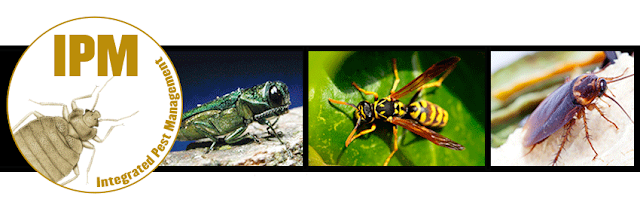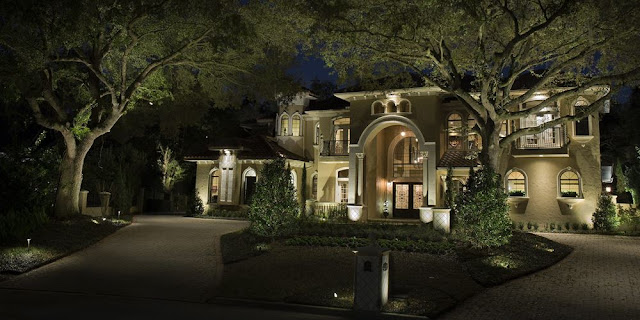Integrated Pest Management: How to Create a Step-By-Step Treatment Plan for the Landscape
Integrated Pest Management
How to Create a Step-By-Step Treatment Plan for the Landscape
© Purdue University
What is Integrated Pest Management?
Integrated Pest Management (IPM) is an ecological approach to regulating pest populations by incorporating ecological action thresholds and effective, environmentally and economically sensible methods such as preventative, cultural, mechanical, biological and chemical applications. IPM is considered to be the cornerstone for environmental stewardship because it plays a vital role in managing ecological sustainability of agricultural and urban environments.
What isn’t Integrated Pest Management?
Integrated Pest Management is not about the elimination of pests. An attempt to completely decimate every pathogen is unrealistic, expensive and can cause more harm to the ecology of your garden. Integrated pest management is about suppressing pest populations to a tolerable level to achieve a sense of balance in an urban ecosystem.
6 Steps for a Successful IPM Plan
1. Inspection
Perform
a site evaluation and record data for climate, soil texture, soil pH, sun
exposure, moisture and grade. Inspect the plant(s) and note any signs or
symptoms found on the roots, stems, leaves, flowers or fruit.
2a. Identification (Host)
Identify the host(s) by its common name and scientific name. Correct host identification is very important for a proper diagnosis since it can help eliminate diseases that are host specific. When in doubt, consult a professional for assistance.
2b. Identification (Pest)
Determine whether the issue is caused by biotic (living) or abiotic (non-living) factors.
Identify the host(s) by its common name and scientific name. Correct host identification is very important for a proper diagnosis since it can help eliminate diseases that are host specific. When in doubt, consult a professional for assistance.
2b. Identification (Pest)
Determine whether the issue is caused by biotic (living) or abiotic (non-living) factors.
For
biotic issues, look for signs of rodents (e.g. teeth marks, claw marks, nests,
holes, fur, droppings, etc.), insects (e.g. chewing, eggs, nymphs, adults,
webbing, frass, exit holes, etc.) and diseases (e.g. mold, slime, fruiting
bodies, etc.). If the issue is biotic, identify the pest(s) by common name and
scientific name. When in doubt, consult a professional for assistance.
For abiotic issues, looks for stress symptoms from sun, shade, wind, drought, saturation, frost, salt, chemicals or compaction. It is important to remember that abiotic issues are very common in the landscape and account for over half (50%) of symptoms observed in trees. If you do not find any physical evidence of living organisms, it might be an abiotic disorder.
3. Action Thresholds
Establish an action threshold that considers pest pathogenicity, virulence and life cycle.
Low action thresholds should be utilized for serious epidemics that can severely injure or even kill your plants.
High action thresholds should be utilized for cosmetic pests that only cause aesthetic damage.
Which type of action threshold should you use? The answer depends on your tolerance level for damage. It is important to consider whether or not action is warranted for your pest. For example, a pest that is classified as cosmetic may look unsightly, but it is unlikely to harm your plants and thus control measures may not be required. Examples of cosmetic pests include birch leafminer, forest tent caterpillar and aspen-birch leaf roller.
For abiotic issues, looks for stress symptoms from sun, shade, wind, drought, saturation, frost, salt, chemicals or compaction. It is important to remember that abiotic issues are very common in the landscape and account for over half (50%) of symptoms observed in trees. If you do not find any physical evidence of living organisms, it might be an abiotic disorder.
3. Action Thresholds
Establish an action threshold that considers pest pathogenicity, virulence and life cycle.
Low action thresholds should be utilized for serious epidemics that can severely injure or even kill your plants.
High action thresholds should be utilized for cosmetic pests that only cause aesthetic damage.
Which type of action threshold should you use? The answer depends on your tolerance level for damage. It is important to consider whether or not action is warranted for your pest. For example, a pest that is classified as cosmetic may look unsightly, but it is unlikely to harm your plants and thus control measures may not be required. Examples of cosmetic pests include birch leafminer, forest tent caterpillar and aspen-birch leaf roller.
4. Control Measures
There are five (5) major classifications of control measures used in integrated pest management: preventative, cultural, mechanical, biological and chemical. The simultaneous use of two or more (2+) control measures is highly recommended as this helps to suppress pest populations through divergent modes of action (MoA). The timing of application of control measures is extremely important; mistiming application can cause injury to a host and some techniques may be rendered ineffective if it is asynchronous to the pest’s life cycle.
Preventative control measures include cultural hygiene practices such as avoidance, sanitization of tools and purchasing certified virus-free seed, propagules, stock and soil.
Cultural control measures include modifications to the growing environment such as row spacing, crop rotation, phenology, scheduling, species resistance, planting techniques, watering, fertilizing, pruning and mulches.
Mechanical control measures include barrier or elimination techniques such as fences, gates, nets, wraps, tape, handpicking, water spraying, mowing, cultivation and pruning.
Biological control measures include biological agents such as predators and parasites. Examples of biological controls include lady beetles, lacewings, parasitoid wasps, nematodes and entomopathogenic fungi. Bacillus thuringiensis (Bt) is a gram-positive bacterium often used as a safer alternative to chemical pesticide.
Chemical control measures include pesticides such as rodenticides, miticides, insecticides, fungicides, bactericides and herbicides. Chemicals can be dangerous if mishandled, so always read and follow the label. In general, chemical control measures should be considered as a last resort.
There are five (5) major classifications of control measures used in integrated pest management: preventative, cultural, mechanical, biological and chemical. The simultaneous use of two or more (2+) control measures is highly recommended as this helps to suppress pest populations through divergent modes of action (MoA). The timing of application of control measures is extremely important; mistiming application can cause injury to a host and some techniques may be rendered ineffective if it is asynchronous to the pest’s life cycle.
Preventative control measures include cultural hygiene practices such as avoidance, sanitization of tools and purchasing certified virus-free seed, propagules, stock and soil.
Cultural control measures include modifications to the growing environment such as row spacing, crop rotation, phenology, scheduling, species resistance, planting techniques, watering, fertilizing, pruning and mulches.
Mechanical control measures include barrier or elimination techniques such as fences, gates, nets, wraps, tape, handpicking, water spraying, mowing, cultivation and pruning.
Biological control measures include biological agents such as predators and parasites. Examples of biological controls include lady beetles, lacewings, parasitoid wasps, nematodes and entomopathogenic fungi. Bacillus thuringiensis (Bt) is a gram-positive bacterium often used as a safer alternative to chemical pesticide.
Chemical control measures include pesticides such as rodenticides, miticides, insecticides, fungicides, bactericides and herbicides. Chemicals can be dangerous if mishandled, so always read and follow the label. In general, chemical control measures should be considered as a last resort.
5. Monitoring
Monitor pest-crop dynamics and control measure efficacy through recordkeeping and documentation during the growing season. It is highly recommended to keep records as part of a site history report as you can use this data for reference in future integrated pest management plans.
Monitor pest-crop dynamics and control measure efficacy through recordkeeping and documentation during the growing season. It is highly recommended to keep records as part of a site history report as you can use this data for reference in future integrated pest management plans.
6. Evaluation
Evaluate the success of your integrated pest management plan. Were there control measures that were more effective than others? Was there anything that didn’t work to address the issue?
-
When
in doubt, contact a professional to ensure your garden can be enjoyed for years
into the future. Contact us for a horticulture consultation today!
Prairie
West Landscapes
3541A 78 Ave SE
3541A 78 Ave SE
Calgary,
AB T2C 1J7
(403)
252-6330





Comments
Post a Comment